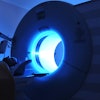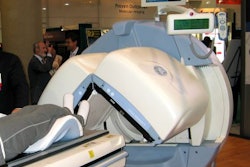Dear AuntMinnie Insider,
What you don't know can hurt you in colorectal cancer screening, which is useless if it misses an important lesion. But a new software tool could strengthen the skills of virtual colonoscopy providers who choose primary 3D interpretation.
The new application aims to eliminate blind spots by highlighting areas of the colonic mucosa that were missed during the first two endoluminal fly-throughs, so they can be examined in a third look.
Radiologists tend to miss significant areas of the colon during 3D endoluminal viewing, studies have shown. On the other hand, missed areas are easy to retrace when they're marked, according to the researchers from the University of Munich-Grosshadern in Germany. Find out how they covered more than 99% of the colon consistently in our Insider Exclusive article.
In our Virtual Colonoscopy Digital Community, a Korean group had difficulty finding flat polyps on VC, detecting fewer than half of the lesions shorter than 2 mm. But they believe that fluid and fecal tagging might have helped.
You'll also want to look at a sizable new study from the University of Wisconsin Medical School in Madison, where researchers confirmed that smaller lesions are unlikely to be histologically advanced, opening the door to the surveillance model long advocated by virtual colonoscopy advocates. See what they saw here.
In related matters, 10-year colorectal cancer screening is a reasonable interval for conventional colonoscopy, according to a group from Canada's University of Manitoba. And a team from Virginia Mason Medical Center in Seattle found more cancer but diminished mortality gains after age 80.
Finally, automated CO2 insufflation held onto its slim lead in providing better colonic distension than room air. Stay tuned for the latest news in VC and colon cancer in your Virtual Colonoscopy Digital Community.



















